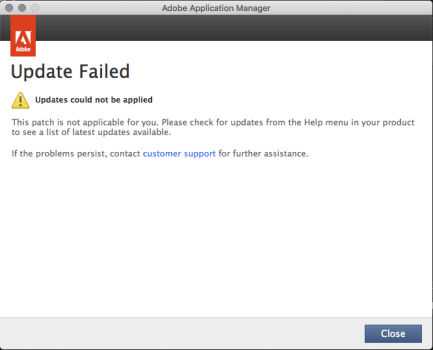Thank you for this breakdown. I was told it does not run well on APFS internal drives, are your computer hard drives in this new format?
Yes they are, or at least most of them are. In detail, we have:
3 Mac minis (Intel, 2018) - APFS - macOS 10.14.6 / Mojave - Adobe Creative Cloud 2021
1 Mac mini (Intel, 2018) - APFS - macOS 10.14.6 / Mojave - Adobe CS6 (Design Standard)
1 Mac mini (Intel, 2018) - APFS - macOS 10.14.6 / Mojave - Adobe Acrobat Reader only
3 iMacs (Intel, 2017) - APFS - macOS 10.14.6 / Mojave - Adobe Creative Cloud 2021
3 iMacs (Intel, 2011) - Mac OS Extended (Journaled) - macOS 10.13.6 / High Sierra - Adobe CS6 (Design Standard)
1 iMac (Intel, 2011) - Mac OS Extended (Journaled) - macOS 10.13.6 / High Sierra - No Adobe software
Then there's also my own, personal Mac I have at home:
1 Mac mini (Intel, 2018) - APFS - macOS 10.14.6 / Mojave - Adobe CS6 (Master Collection)
[I also have the Mac Pro mentioned in my signature, which I no longer use but this ran the exact same combination of software as my home Mac mini - i.e. Mojave (legitimate install due to the Metal-compatible graphics card) on APFS, plus Adobe CS6 (Master Collection).]
The 2011 iMacs can't go beyond High Sierra, and have traditional hard disk drives, as opposed to SSDs, which all the other Macs have / had, including the Mac Pro.
From what I've read - although I have no direct experience of this - APFS tends to suit SSDs, whereas Mac OS Extended (Journaled or otherwise) tends to suit HDDs.
So that's how things sit with the Macs I'm responsible for. The SSD Macs use APFS, and the HDD Macs use Mac OS Extended (Journaled). That's down to how the Macs originally shipped though, and not any decision or action on my part.
What's crucial in your case is precisely what sort of Mac you have, what range of OSs it's capable of running, what precise applications within CS6 you'll wholly (or mostly) be using, and how hard you think you'll "push" those applications.
For example setting type in InDesign or Illustrator is a whole different ball game to compositing complex projects in After Effects.
It's very difficult to help you in a specific way because you've not volunteered several key bits of information that anyone reading this - no matter how expert they are - needs to know. Which comes back to my initial point in my first post about poor calibre posts, unfortunately.
I was wondering a bout a virtual machine, since I am aware that mac minis run hot and can have cooling issues. The less strain I put on it with things like running virtual machines, the better.
Yes they can run hot. The 2 Macs I use at home for example - both are Mac minis (Intel, 2018) - can get quite warm, and because the exhaust vents are right below the ports, the plugs on everything I have connected (e.g. webcam, headset, etc) can be hot to the touch at the end of the day when I shut down & then disconnect them (because I'm taking that Mac into work the next day). None of this is a concern though. These Macs are designed that way. The entire aluminium case is one big heat sink.
Mind you I do very little video work at home these days. Running Premiere / After Effects / Media Encoder will tax the system far more than Illustrator will tend to.
Have you rub into any installation restrictions? since you are running this app on multiple computers. I thought since Adobe has dropped support for this software are there still restrictions on the number of computers these apps can be installed on?
The fact that Adobe has dropped support for CS6 years ago has no bearing whatsoever on how many computers you can install / activate / run CS6 on. Instead it's entirely down to the licence you own.
In our own case, at work we have a 9 user licence (or more accurately a 5 user one and another 4 user one). Each install required a unique serial number. These numbers were provided by our reseller when we bought the software.
As we now only use CS6 on 4 Macs at work, and will be getting rid of it entirely in the next few months, licensing isn't a concern.
With Creative Cloud it's entirely different. For any given single user licence, you can install on unlimited computers, activate on 2 (at the most), and run on one at a time.
As I said previously, letting us know the precise model of Mac, how much RAM it has, whether the boot drive is an HDD or an SSD, which applications you plan to run, and how hard you plan to push them, would help us help you enormously.


